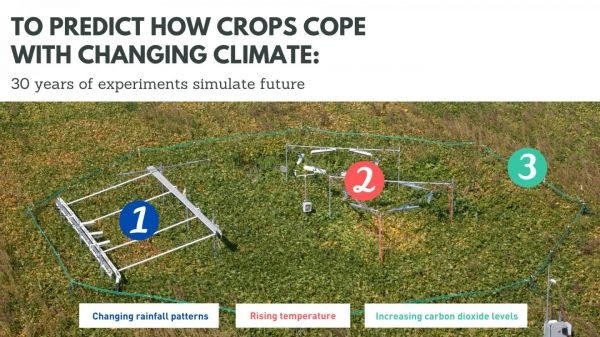Five years ago, the United Nations committed to achieving the Sustainable Development Goal of Zero Hunger by 2030. Since then, however, world hunger has continued to rise. Nearly 9 percent of our global population is now undernourished, according to a 2020 report from the FAO, and climate variability is a leading factor driving us off course.
Over the past 30 years, a network of 14 long-term research facilities spanning five continents has simulated future levels of carbon dioxide (CO2) to forecast the impact on crops. Importantly, these ‘Free-Air Concentration Enrichment’ (FACE) experiments are conducted outside in real-world field conditions to capture the complex environmental factors that impact crop growth and yield.
Today, a review published in Global Change Biology synthesizes 30 years of FACE data to grasp how global crop production may be impacted by rising CO2 levels and other factors. The study portends a less optimistic future than the authors’ previous review published 15 years ago in New Phytologist. “There are likely genetic solutions, should society decide to act on these—however, time is short,” said co-author Stephen Long, Ikenberry Endowed University Chair of Crop Sciences and Plant Biology at the University of Illinois.
Read more at: Carl R. Woese Institute for Genomic Biology, University of Illinois at Urbana-Champaign
A review from the University of Illinois synthesizes 30 years of data from 14 facilities worldwide that simulate future climate conditions to determine that rising carbon dioxide could be counterproductive for crops. Pictured: The SoyFACE 'Free-Air Concentration Enrichment' (FACE) facility at the University of Illinois simulates rising carbon dioxide and temperature as well as changing rainfall patterns. (Photo Credit: University of Illinois)


